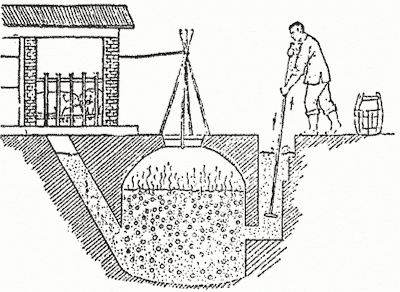Each kilogram of biodegradable material yields around 0.4 m³ (400l) of gas.
So
in practice, in small scale waste to energy systems, if you have some
livestock, plus kitchen and human waste you can meet your cooking and
lighting needs easily:
• 2 gas rings for a couple of hours a day will use between 1-2 m³
• Gas lights need around 0.1 m3 (100l) per hour.
Driving any kind of engine (eg a generator or a pump) is, however, way beyond the domestic-scale. (Better to go for
algal biodiesel!)
Need Biogas Now?





